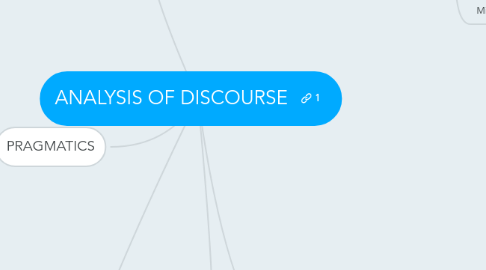ANALYSIS OF DISCOURSE
by Jackson Acosta


1. PRAGMATICS
1.1. Extends the analysis of meaning beyond grammar and word meaning to the relationship between the participants and the background knowledge they bring to a situation
1.2. Conversational Maxims: quantity, quality, relation and manner
1.3. politeness
1.3.1. how well you know
1.3.2. status relative
1.3.3. ranking of imposition
2. INTERACTIONAL SOCIOLINGUISTICS
2.1. Approach that focuses on the clues people use to interpret conversational interaction within its etnographic context
2.2. Contextualisation clues: features through which speakers signal and listeners interpret
2.2.1. Signal contextual presupossitions: Knowledge the speaker assumes the listener has already or information they work out by paying attention to features of the context
2.3. Miscommunication
2.3.1. When expectators are not fulfilled, listeners make inferences about the speaker
2.3.1.1. Schema.- Set of expectations that we bring to an interaction, based on our precious experiences and our cultural norms
3. CONVERSATION ANALYSIS
3.1. Approach that states "talk is action". Communication is an organized activity
3.1.1. You should not begin the analysis with any preconceived ideas about what will be worth examining
3.2. Adjacency Pairs.- Related utterances produced by 2 successive speakers in that the 2nd utterance is a follow-up to the first
3.3. Conversational feedback
3.3.1. Evidences, verbal or non-verbal that one is attending to the speaker
